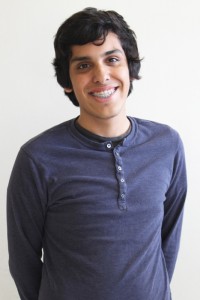Students in the Expository Reading and Writing Course (ERWC) discuss the functions and implications of genocide throughout Feb. and March to better understand the world and the ramifications of their actions. The genocide course is a specialty unit created by ERWC teachers Mrs. Hill, Ms. Stratford, and Ms. Nishioka. At the end of the course, students are required to present a speech that covers a specific extermination.
The unit focuses on the steps that lead to a mass, systematic decimation of a group of people, and the repercussions that such atrocities have across the world. Most importantly, however, the course seeks to shed light on genocides that have occurred—and are occurring—around the world. Students learned about relatively obscure and otherwise unknown genocides, such as the one that occurred in Guatemala in the 1990s. Massacres in Darfur, Sri Lanka, Cambodia, Rwanda, Burma, Somalia, and Nanking were also given their respective time.
“One of the main things that I learned was how far hate can go,” senior Joselyn Franco said. “One of the quotes that I really liked was: ‘Genocide is the strongest form of hate.’ It just gives you an outlook on what there is beyond Downey.”
Franco absolutely hit the nail on the head there. Genocide is not something that springs forth unannounced or that can be legislated by a power figure, rather, an organized and methodical massacre of a marginalized group is just that—organized. An interesting way of looking at it as like this: genocide occurs due to the amalgamation of hate and distrust—or “othering,” if you will—against a certain group of people, which is then taken to its logical extreme, or extermination.
To help students better understand the amalgamation of hate, genocide is broken down into eight key and fundamental stages. The stages typically occur in this order, although it is not concrete and subject to change: categorization (us vs. them), symbolization (applying visible symbols to further separate), dehumanization (denying a group’s humanity), organization (genocidal plans are constructed), polarization (extremist groups gain followers through propaganda), preparation (targeted groups are relocated, etc.), extermination, and denial.
“[This unit] has made me look beyond people,” Franco said. “I look beyond what they look like ‘cause I feel that that’s the main reason why genocide happens: it happens because of differences.”
Differences that seem to be irreconcilable, such as skin color, religion, or heritage, shouldn’t be viewed as obstacles or barriers. This is essentially what students learn, alongside the structure of foundations of genocide.
“I recommend people learn more about [genocide] because discrimination against a certain group or person can lead them to not feel safe,” senior Hyeyko Cortez said. “This leads them to not have a sanctuary where they can feel safe if they’re hurt too much. I’ve learned just how far discrimination can go.”
Hate certainly can be impactful, and the students in either ERWC, such as Elisha Adeagbo, have certainly gained critical research skills.
“Researching was difficult but highly beneficial,” Adegabo said. “This is a skill that is really prized in college.”
The research is also a crucial for the synthesis of the short speech students present at the end of the unit. The researchers in making looked into the dark histories of their countries, and for some the horrifying realizations of the atrocities inherent to genocide deeply resonated within them.
All in all, students have gained insights and learned about things that will have far reaching implications.



